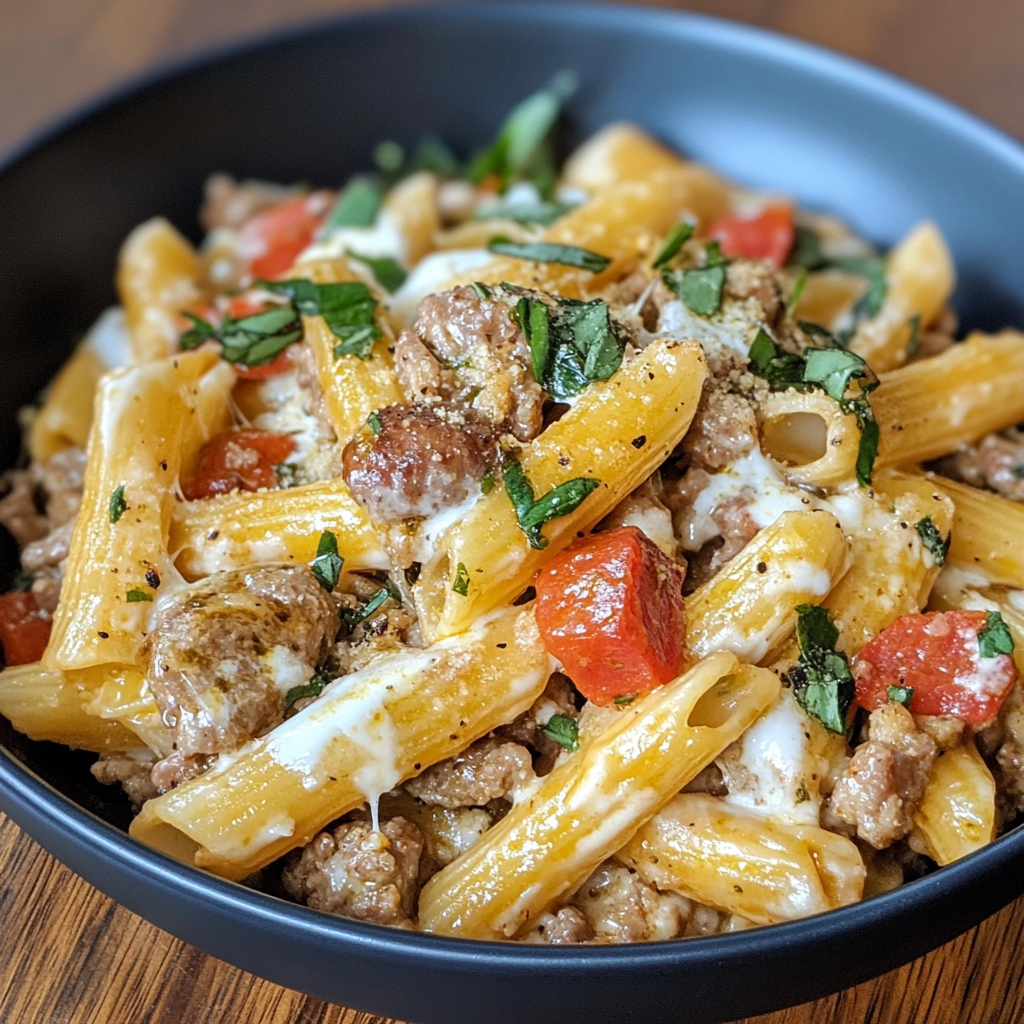Introduction to Leftover Brat Pasta Recipes
If you have leftover brats from your last cookout, don’t let them go to waste! Incorporating them into a pasta dish is not only a great way to repurpose leftovers, but it also creates a delicious, satisfying meal that’s quick and easy to make. The bold, savory flavors of bratwurst blend perfectly with creamy sauces, tangy ingredients like garlic and parmesan, and various pasta shapes such as rigatoni or rotini.
The combination of brats and pasta offers a hearty, flavorful dish that can be customized with spices, cheeses, or veggies, making it perfect for busy weeknights.
The Appeal of Using Leftovers for Pasta
One of the biggest benefits of creating leftover pasta dishes is reducing food waste. Instead of letting leftover brats sit in your fridge, you can easily repurpose them into a hearty, flavorful meal. This not only helps you stretch your grocery budget but also minimizes waste, making your kitchen more sustainable. Turning leftovers into new, exciting dishes like pasta is a smart way to utilize everything in your pantry.
Additionally, leftover bratwurst adds bold flavors to your pasta dishes. The savory, slightly spiced notes of brats can elevate a simple pasta dish, pairing beautifully with creamy sauces or light olive oil-based blends.
By combining brats with pasta, you create a dish that’s both easy and versatile. Incorporating ingredients like beer or garlic into the mix further enhances the flavors.
Key Ingredients for Brat Pasta
Creating a delicious brat pasta dish starts with the right ingredients, blending savory sausages with pasta and flavor-packed enhancers. Here are the key components to craft the perfect meal.
1. Brats (Grilled or Cooked, Sliced)
Start with leftover brats, grilled or cooked, then sliced into bite-sized pieces. The slightly smoky and spiced flavor of bratwurst brings depth to the dish, making it the perfect base for your pasta. Sliced bratwurst pairs well with creamy or buttery sauces, adding protein and bold flavor.
2. Pasta Types
Choosing the right pasta shape is essential for texture and sauce absorption:
- Rigatoni: Its ridged surface clings to sauces, perfect for cream-based dishes.
- Rotini: The spiral shape holds ingredients like sliced brats and veggies well, making each bite flavorful.
- Spaghetti: For a lighter dish, spaghetti works well with oil-based or simple garlic and butter sauces.
3. Flavor Enhancers
To boost the taste, use these classic flavor enhancers:
- Parmesan: Adds a sharp, salty bite to creamy sauces.
- Garlic & Onions: Sautéed garlic and onions provide a rich base for the sauce, complementing the bratwurst’s flavors.
- Butter or Cream-Based Sauces: Whether you’re going for a rich Alfredo or a light garlic butter sauce, these creamy elements pair perfectly with the hearty brats.
4. Optional Ingredients
For added depth and richness, consider including:
- Bell Peppers: Sautéed peppers add sweetness and a pop of color.
- Beer: A splash of wheat beer or pale ale enhances the dish with a tangy twist.
- Cream Cheese: Adding a dollop of cream cheese can make the sauce extra creamy and rich.
5. Substitution Options
If you prefer alternatives, you can substitute spicy sausage for more heat or use veggies like zucchini. For a dairy-free option, replace the cream sauce with olive oil or chicken broth.
Simple Brat Pasta Recipe
Turn your leftover bratwursts into a quick and satisfying pasta dish with this easy recipe. The combination of brats and a rich, creamy sauce makes for a delicious weeknight dinner.
Ingredients:
- 2-3 leftover bratwursts, sliced
- 12 oz pasta (rigatoni, rotini, or spaghetti)
- 1 tablespoon olive oil
- 3 cloves garlic, minced
- 1 cup heavy cream
- ½ cup freshly grated parmesan cheese
- 1 teaspoon black pepper
- Salt to taste
- Optional: A splash of beer or white wine for extra depth
Step-by-Step Instructions:
- Cook the pasta: Bring a large pot of salted water to a boil and cook the pasta until al dente. Drain and set aside.
- Sauté the garlic: In a large skillet, heat olive oil over medium heat. Add the minced garlic and sauté for about 1-2 minutes until fragrant.
- Add the brats: Slice the leftover brats and add them to the skillet. Cook for 3-4 minutes, allowing them to heat through and absorb the garlic flavor.
- Prepare the creamy sauce: Pour in the heavy cream and let it simmer for a few minutes until it thickens slightly. Stir in the parmesan cheese until melted and well-combined.
- Season and combine: Add black pepper and salt to taste. For enhanced flavor, you can add a splash of beer or white wine, which will bring a subtle tang to the sauce. Toss the cooked pasta into the skillet, stirring until well-coated in the creamy sauce.
- Serve: Garnish with additional parmesan and black pepper, and enjoy your flavorful brat pasta.
Variations: Beer Brat Pasta
For those looking to elevate their bratwurst pasta, try cooking it in a rich, buttery beer sauce. Using a wheat beer base enhances the tangy flavor of the dish, adding depth and complexity to each bite.
Ingredients:
- 2-3 bratwursts (grilled or cooked, sliced)
- 12 oz pasta (spaghetti, rotini, or rigatoni)
- ½ cup wheat beer or pale ale
- 2 tablespoons unsalted butter
- 1 small yellow onion, finely chopped
- 3 cloves garlic, minced
- ½ cup freshly grated parmesan cheese
- Salt and black pepper to taste
- Optional: Red pepper flakes for heat
Instructions:
- Cook the pasta: Boil your pasta in salted water until al dente. Drain and set aside.
- Sauté the aromatics: In a large skillet, melt the butter over medium heat. Add the chopped onion and garlic, cooking until softened and fragrant, about 2-3 minutes.
- Add the beer: Pour in the wheat beer, scraping up any browned bits from the bottom of the pan. Let it simmer for 3-5 minutes until reduced by half, which concentrates the flavors.
- Incorporate the brats: Add the sliced bratwursts to the skillet and cook for another 2 minutes, allowing them to soak up the tangy beer sauce.
- Finish with cheese: Stir in the cooked pasta and freshly grated parmesan cheese. Toss to combine, and season with salt, pepper, and optional red pepper flakes for a spicy kick.
Bratwurst Casserole with Pasta
Transform your leftover bratwursts into a hearty and satisfying casserole, combining rigatoni or penne pasta, rich Alfredo sauce, and a cheesy topping. This dish is perfect for feeding a crowd or enjoying as a comforting weeknight dinner.
Ingredients:
- 2-3 leftover bratwursts, sliced
- 12 oz rigatoni or penne pasta
- 2 cups Alfredo sauce (store-bought or homemade)
- 1 cup shredded mozzarella or Italian blend cheese
- ½ cup parmesan cheese
- 1 small bell pepper, diced (optional)
- 1 small onion, chopped
- 2 tablespoons olive oil
- Salt and pepper to taste
Instructions:
- Cook the pasta: Boil your rigatoni or penne in salted water until al dente. These types of pasta work best for casseroles as their ridged surfaces help absorb the creamy Alfredo sauce. Drain and set aside.
- Sauté the vegetables: In a large skillet, heat olive oil over medium heat. Add the diced onion and bell pepper, sautéing until softened, about 3-4 minutes.
- Add the brats: Slice the leftover bratwursts and add them to the skillet, cooking for an additional 2 minutes to heat through and blend the flavors.
- Assemble the casserole: In a large mixing bowl, combine the cooked pasta, sautéed veggies, and brats. Pour in the Alfredo sauce and toss until everything is evenly coated.
- Top with cheese: Transfer the mixture to a greased baking dish. Sprinkle the shredded mozzarella and parmesan on top for a cheesy, golden finish.
- Bake: Preheat your oven to 375°F. Bake the casserole for 20-25 minutes, or until the cheese is bubbly and slightly golden on top.
Tips for the Best Casserole:
- Use rigatoni or penne: These pasta shapes have ridges that help absorb the sauce better, ensuring each bite is creamy and flavorful.
- Make it creamier: For an even richer casserole, stir in a dollop of cream cheese or top with a mix of breadcrumbs and extra parmesan for added texture.
Tips for Cooking with Leftover Brats
When cooking with leftover brats, it’s essential to reheat them properly to avoid drying them out. The best way to do this is by gently warming them in a skillet over medium heat. Add a splash of water or broth to the pan and cover with a lid to create steam, keeping the brats juicy while reheating. Avoid microwaving, as this can toughen the sausages.
For adding grilled or pan-fried brats to pasta dishes, slice them into bite-sized pieces and heat them in the sauce for a few minutes before serving.
Serving Suggestions for Brat Pasta
Pairing your brat pasta with the right sides can elevate the meal and make it a complete, satisfying dinner. A classic choice is garlic bread or crostini, which adds a crispy texture that contrasts beautifully with the creamy pasta. These toasted breads are perfect for soaking up any leftover sauce. You can also opt for a fresh side salad with a light vinaigrette to balance the richness of the dish and provide a refreshing bite.
For garnishes, consider adding:
- Fresh parsley for a pop of color and freshness.
- Additional parmesan to deepen the cheesy flavor.
- Red pepper flakes to add a spicy kick to each bite.
These garnishes not only enhance the presentation but also bring extra flavor to your bratwurst pasta.
Frequently Asked Questions (FAQ)
Can I use other types of sausages?
Yes, Italian sausages or even spicy sausages work well as substitutes for brats in pasta dishes, providing different flavor profiles. Experimenting with various sausages can add a unique twist to your recipe.
How long do leftovers last?
Leftovers can last up to 3-5 days if stored properly in an airtight container in the refrigerator. For best results, reheat them gently to avoid drying out the pasta.
Can I make this ahead?
Yes, you can make the pasta ahead of time. When reheating, add a splash of broth or sauce to retain moisture and keep the dish creamy.
Conclusion
Leftover brat pasta dishes offer incredible versatility, allowing you to create flavorful meals without wasting food. From creamy Alfredo casseroles to tangy beer brat pasta, the possibilities are endless. You can easily adapt the ingredients to suit your preferences, whether by adding more spice, incorporating veggies, or experimenting with different pasta shapes. Don’t be afraid to try new flavors, like using beer in the sauce or swapping brats for Italian sausages.

